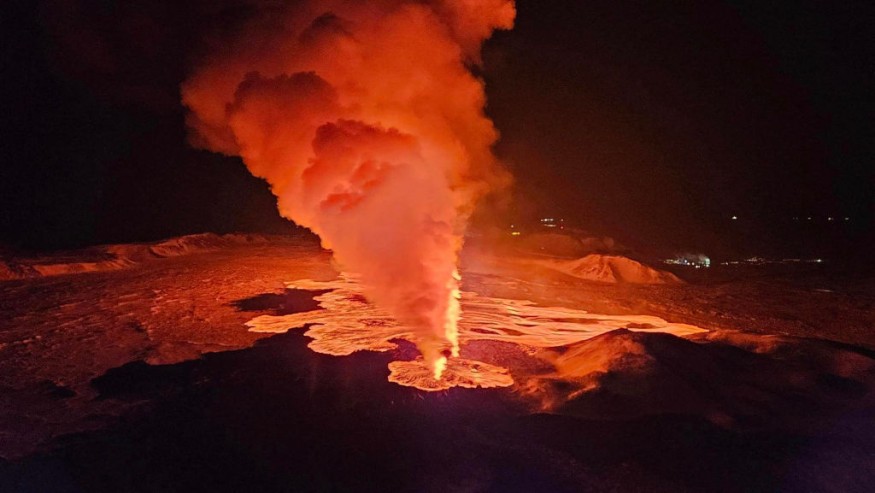
For the third time in just three months, an Iceland volcano has erupted once more.
Shooting Lava
Webcams in the Reykjanes peninsula have offered live streams that reveal bright orange molten rock plumes leaking out of a ground fissure. Smoke plumes have also been shooting up into the air.
The volcano is presently erupting from a fissure that spans two miles and has opened in a novel location near the December eruption site.
On Thursday morning, the IMO (Icelandic Meteorological Office) explained in a statement that at 5:30 a.m., strong seismic activity began at Mt. Sýlingarfell's northeast. After roughly half an hour, a volcanic eruption began in the area.
In the first minutes, the fissure stretched towards the north and south. The earliest shots of the surveillance flight of the Icelandic Coast Guard suggest that the volcanic eruption happened at a similar area as the December eruption. The fountains of lava were able to reach a height of 50 to 80 meters, while the volcanic plumes rose roughly three kilometers above the fissure.
The IMO notes that the lava flows are apparently less powerful compared to the start of the December eruption. Back then, lava was pouring every 20 seconds to fill an area the size of an Olympic swimming pool.
Geologist David Kitchen explains that the volcano keeps on erupting at various locations because of the unique seismic properties of Iceland. Its lava has also been causing infrastructure damage as it flowed through a road close to the Blue Lagoon bathing pods' exit. This area has been evacuated.
Amidst this grave disaster, construction workers have also been captured trying to save infrastructure while they can. A circulating video shows a worker within a backhoe trying to spread what looks like a mound of dirt. This is presumably done to stop the lava from destroying the remains of the road.
Unprecedented Subsurface Magma Flow Rate
Moreover, the underground magma that was responsible for the eruptions was observed to have a much faster flow than thought. The magma dike, which spans nine miles, was able to attain a flow rate of 7,400 cubic meters per second.
Magma dikes are capable of transporting molten rock onto the surface of the earth. This allows it to break the crust and turn into a volcanic eruption.
According to a new study, this subsurface magma flow rate is quite unprecedented. The authors note that the peak rate of magma flows is two to three magnitude orders larger compared to the eruptions in 2023, 2022, and 2022 in the Fagradalsfjall area close by. This flow rate is also larger compared to the Bárðarbunga events in 2014 to 2015.
The study shows that tectonic stress and fracturing are crucial factors when it comes to dike formation. These also imply a high hazard potential for intrusions that reach the surface and lead to eruptions. This shows that volcanic eruptions are not just primarily driven by pressure.
The authors note that the high flow rate offers insight regarding major dike formations. They also note that this rate is likely affected by the low density of lava beneath the country. This makes it more adept and buoyant at quickly flowing through ground cracks. They also note that the findings show that high flow rates within dikes in other volcanoes could imply eruption risks.
Check out more news and information on Environment & Climate in Science Times.










